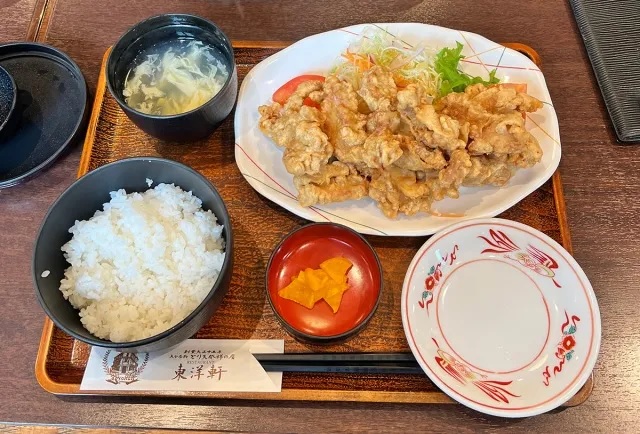
Beer? Sake? One part of Japan has a strong fondness for both, as well as a few other alcoholic beverages.
Japan’s Ministry of Finance conducts an annual survey on the spending habits of Japanese households, sifting through both total expenditures by city and what exactly those households spent their money on. Some of the most interesting societal snapshots the statistics provide are the ones on food and beverage spending, with this year’s results showing that one region in particular appears to be spending a lot on alcohol.
First, when looking at total household expenditures, you might be surprised to learn that Tokyo didn’t finish at the top of the list. The biggest per-household spender was Saitama City, the most populous town in Saitama Prefecture, Tokyo’s neighbor to the north, with average expenditures of 4,129,107 yen (US$28,090). Tokyo’s wards (which make up the central part of the city and its closest suburbs) averaged out at 4,095,843 yen per household, followed by Tsu, Mie Prefecture, at 3,991,958 yen.
But just because those three cities spent the most doesn’t mean they spent the most on each and every type of item. Several other municipalities claimed the top per-household expenditures for specific types of food and drink:
● Akita City: Most money spent per household on broccoli, sake
● Aomori City: Bean sprouts, beer, cup ramen and other noodles, yakitori
● Hamamatsu (Shizuoka Prefecture): rice, mikan (mandarin oranges)
● Kagoshima City: Shochu
● Kanazawa (Ishikawa Prefecture): Curry roux
● Kita Kyushu City (Fukuoka Prefecture): Tarako (cod roe)
● Kobe (Hyogo Prefecture): Bread
● Kumamoto City: Watermelon
● Nagano City: Apples
● Nara City: Chocolate
● Oita City: Chicken
● Saitama City: Cake
● Sendai (Miyagi Prefecture): Chu-hi cocktails
● Shizuoka City: Green tea, tuna
● Tokyo Wards: Black tea, pasta, pork
● Tottori City: Crab
● Wakayama City: Beef
● Yamagata City: Whisky
Several of these chart-topping cities match up with regions of Japan that are famous for the corresponding items. Kumamoto, Nagano, and Shizuoka have large numbers of watermelon, apple, and mikan farms, respectively, and access to especially fresh fruit, with a wide range of sub-varieties for each, naturally translates into more spending on those foods. Toriten, chicken tempura, is the representative dish of Oita, so it makes sense that its residents buy a lot of chicken. Same goes for black tea and Western-style pasta in Tokyo, Japan’s most cosmopolitan, internationalized city.
▼ We still have fond memories of this toriten lunch set we ate in Oita.
There’s something similar with Kagoshima and shochu, since the drink came to Japan through contact with other Asian nations, which Kagoshima had more of back in the olden days than most of the rest of Japan. But Aomori doesn’t have any significantly strong cultural connection to beer production, nor does Sendai to the chu-hi, a cocktail (often canned and purchased from convenience stores) made with shochu, soda water, and fruit flavorings. And while Akita does have a lot of sake breweries, its reputation as a producer of Japan’s indigenous spirit still lags behind that of Niigata Prefecture.
So what’s something that Akita, Aomori, Sendai, and whisky-loving Yamagata too, have in common? They’re all located in Tohoku, the northeastern end of Japan’s main island of Honshu. Tohoku is known for its natural beauty, less densely populated cities, relaxed pace of life, and, last but certainly not least, very long, very cold winters. During those bone-chilling winter months, it’s not hard to imagine that heading to the nearest convenience store or liquor shop and stocking up on liquid entertainment with which to pass the time back at home starts to sound like an increasingly attractive option than venturing any farther into the icy conditions.
▼ “Hmm…forecast says it’s gonna be cold for the next 90 days…”
That would also explain why the most enthusiastic wine buyers were all the way down in Yokohama, well south of Tohoku. Yokohama is Japan’s second-largest city in terms of population and its coastal location means it enjoys a relatively mild climate by Japanese standards, meaning a relatively less isolation throughout the year. Wine remains more of a social-gathering drink in Japan, something to bring to a party or to open when having friends over, than something drunk by oneself at home on a daily basis.
However, it remains a mystery why Nara, one of Japan’s most traditionally minded cities, spent more on chocolate than anywhere else on a per-household basis. Rest assured that we intend to investigate by eating as many chocolate desserts as we can the next time we’re in the city.
Source: NHK News Web via Otakomu
Top image: Pakutaso
Insert images: SoraNews24, Pakutaso
● Want to hear about SoraNews24’s latest articles as soon as they’re published? Follow us on Facebook and Twitter!
Follow Casey on Twitter, where he’s deeply fond of Akita sake.



 Cherry blossom forecast 2021 released! Sakura set to bloom early in Tokyo again this year
Cherry blossom forecast 2021 released! Sakura set to bloom early in Tokyo again this year Sakura forecast 2022 released! Cherry blossoms set to bloom even earlier in Japan this year
Sakura forecast 2022 released! Cherry blossoms set to bloom even earlier in Japan this year Kyoto may be getting more modern, tall buildings as city relaxes development limits
Kyoto may be getting more modern, tall buildings as city relaxes development limits Detective Conan collaborative cafés to open across Japan, will serve drug that turned Conan tiny
Detective Conan collaborative cafés to open across Japan, will serve drug that turned Conan tiny Super-detailed cherry blossom forecast maps show early arrival for Japan’s 2024 sakura season
Super-detailed cherry blossom forecast maps show early arrival for Japan’s 2024 sakura season Japan’s new difficult-to-drink-from beer glass protects your liver, but it’s a brutal experience
Japan’s new difficult-to-drink-from beer glass protects your liver, but it’s a brutal experience New Pokémon ice cream, dessert drinks, and cool merch coming to Baskin-Robbins Japan【Pics】
New Pokémon ice cream, dessert drinks, and cool merch coming to Baskin-Robbins Japan【Pics】 New samurai glasses are Japan’s latest weird must-have souvenir
New samurai glasses are Japan’s latest weird must-have souvenir Demon Slayer: Kimetsu no Yaiba gets new roller coaster attractions and food at Universal Studios Japan
Demon Slayer: Kimetsu no Yaiba gets new roller coaster attractions and food at Universal Studios Japan How to order snacks on a Shinkansen bullet train in Japan
How to order snacks on a Shinkansen bullet train in Japan High-fashion Totoro cuddle purse is like an elegant stroll in the forest【Photos】
High-fashion Totoro cuddle purse is like an elegant stroll in the forest【Photos】 Kyoto Tower mascot termination reveals dark side behind cute Japanese characters
Kyoto Tower mascot termination reveals dark side behind cute Japanese characters Caffeinated ramen for gamers that you can eat with one hand going on sale in Japan
Caffeinated ramen for gamers that you can eat with one hand going on sale in Japan Burger King Japan suddenly adds Dr. Pepper and Dr. Pepper floats to its menu nationwide
Burger King Japan suddenly adds Dr. Pepper and Dr. Pepper floats to its menu nationwide Hello, cosmetics! Clinique teams up with Hello Kitty this summer for first-time collaboration
Hello, cosmetics! Clinique teams up with Hello Kitty this summer for first-time collaboration Nintendo history you can feel – Super NES, N64, and GameCube controllers become capsule toys
Nintendo history you can feel – Super NES, N64, and GameCube controllers become capsule toys “The most Delicious Cup Noodle in history” – Japan’s French Cup Noodle wins our heart【Taste test】
“The most Delicious Cup Noodle in history” – Japan’s French Cup Noodle wins our heart【Taste test】 Starbucks releases a cute Frappuccino and Unicorn Cake…but not in Japan
Starbucks releases a cute Frappuccino and Unicorn Cake…but not in Japan McDonald’s Japan’s Soft Twist Tower: A phantom ice cream only sold at select branches
McDonald’s Japan’s Soft Twist Tower: A phantom ice cream only sold at select branches Yabai Ramen: What makes this Japanese ramen so dangerous?
Yabai Ramen: What makes this Japanese ramen so dangerous? Finally! Nintendo Japan expands Switch 8-bit controller sales to everybody, Online member or not
Finally! Nintendo Japan expands Switch 8-bit controller sales to everybody, Online member or not Japanese government wants to build luxury resorts in all national parks for foreign tourists
Japanese government wants to build luxury resorts in all national parks for foreign tourists To combat declining birth rate, Japan to begin offering “Breeding Visas” to foreigners
To combat declining birth rate, Japan to begin offering “Breeding Visas” to foreigners 10 things you should buy at 7-Eleven in Japan
10 things you should buy at 7-Eleven in Japan Studio Ghibli releases anime heroine cosplay dresses that are super comfy to wear
Studio Ghibli releases anime heroine cosplay dresses that are super comfy to wear Woman charged for driving suitcase without a license in Osaka
Woman charged for driving suitcase without a license in Osaka Studio Ghibli unveils My Neighbour Totoro miniature house model
Studio Ghibli unveils My Neighbour Totoro miniature house model Kyoto experiencing problems with foreign tourists not paying for bus fares, but not on purpose
Kyoto experiencing problems with foreign tourists not paying for bus fares, but not on purpose Fighting mild hunger with a Japanese soda that turns into jelly in the stomach【Taste test】
Fighting mild hunger with a Japanese soda that turns into jelly in the stomach【Taste test】 Studio Ghibli’s Howl’s Moving Castle tapestry unveiled in Japan for first time
Studio Ghibli’s Howl’s Moving Castle tapestry unveiled in Japan for first time McDonald’s new Happy Meals offer up cute and practical Sanrio lifestyle goods
McDonald’s new Happy Meals offer up cute and practical Sanrio lifestyle goods Sales of Japan’s most convenient train ticket/shopping payment cards suspended indefinitely
Sales of Japan’s most convenient train ticket/shopping payment cards suspended indefinitely Sold-out Studio Ghibli desktop humidifiers are back so Totoro can help you through the dry season
Sold-out Studio Ghibli desktop humidifiers are back so Totoro can help you through the dry season Japanese government to make first change to romanization spelling rules since the 1950s
Japanese government to make first change to romanization spelling rules since the 1950s Foreigner’s request for help in Tokyo makes us sad for the state of society
Foreigner’s request for help in Tokyo makes us sad for the state of society Ghibli founders Toshio Suzuki and Hayao Miyazaki contribute to Japanese whisky Totoro label design
Ghibli founders Toshio Suzuki and Hayao Miyazaki contribute to Japanese whisky Totoro label design Doraemon found buried at sea as scene from 1993 anime becomes real life【Photos】
Doraemon found buried at sea as scene from 1993 anime becomes real life【Photos】 Tokyo’s most famous Starbucks is closed
Tokyo’s most famous Starbucks is closed Princesses, fruits, and blacksmiths: Study reveals the 30 most unusual family names in Japan
Princesses, fruits, and blacksmiths: Study reveals the 30 most unusual family names in Japan Japan super budget dining – What’s the best way to spend 1,000 yen at sushi restaurant Sushiro?
Japan super budget dining – What’s the best way to spend 1,000 yen at sushi restaurant Sushiro? Sushi for breakfast? Our under-1,000-yen breakfast with Hama Sushi’s new morning menu
Sushi for breakfast? Our under-1,000-yen breakfast with Hama Sushi’s new morning menu When do Japanese women have their first kiss? Survey finds gap between different parts of Japan
When do Japanese women have their first kiss? Survey finds gap between different parts of Japan Updated cherry blossom forecast moves up blooming date, predicts sakura season start for Ueno Park
Updated cherry blossom forecast moves up blooming date, predicts sakura season start for Ueno Park Foreign travelers now spend more money in Japan than ever before, surprise country at top of list
Foreign travelers now spend more money in Japan than ever before, surprise country at top of list Need a place to stay in Japan? These share houses have discounts for newly arrived foreigners
Need a place to stay in Japan? These share houses have discounts for newly arrived foreigners Dirt cheap all-you-can-drink sake sampler in Tokyo saves us money plus a trip to Akita
Dirt cheap all-you-can-drink sake sampler in Tokyo saves us money plus a trip to Akita Online survey sheds light on prefectural personality rankings of Japanese people
Online survey sheds light on prefectural personality rankings of Japanese people Kansai area people more genetically predisposed to liking coffee than elsewhere in Japan
Kansai area people more genetically predisposed to liking coffee than elsewhere in Japan Top five Japanese prefectures for childhood education expenditure would make any wallet shudder
Top five Japanese prefectures for childhood education expenditure would make any wallet shudder Character created by Hayao Miyazaki pops up on manhole covers in Ghibli Museum neighbourhood
Character created by Hayao Miyazaki pops up on manhole covers in Ghibli Museum neighbourhood Shogun sweets? Trees said to be planted by first Tokugawa shogun still bear fruit used for sweets
Shogun sweets? Trees said to be planted by first Tokugawa shogun still bear fruit used for sweets Don’t know which sake to drink? These handy flavor charts help you pick by region of Japan
Don’t know which sake to drink? These handy flavor charts help you pick by region of Japan How much money do you need to live in your own apartment in Japan?【Survey】
How much money do you need to live in your own apartment in Japan?【Survey】 Reminder: Japan has awesome all-you-can-eat cookies cafes
Reminder: Japan has awesome all-you-can-eat cookies cafes Shizuoka Prefecture may lose title of Japan’s top tea producer to rising star Kagoshima
Shizuoka Prefecture may lose title of Japan’s top tea producer to rising star Kagoshima
Leave a Reply